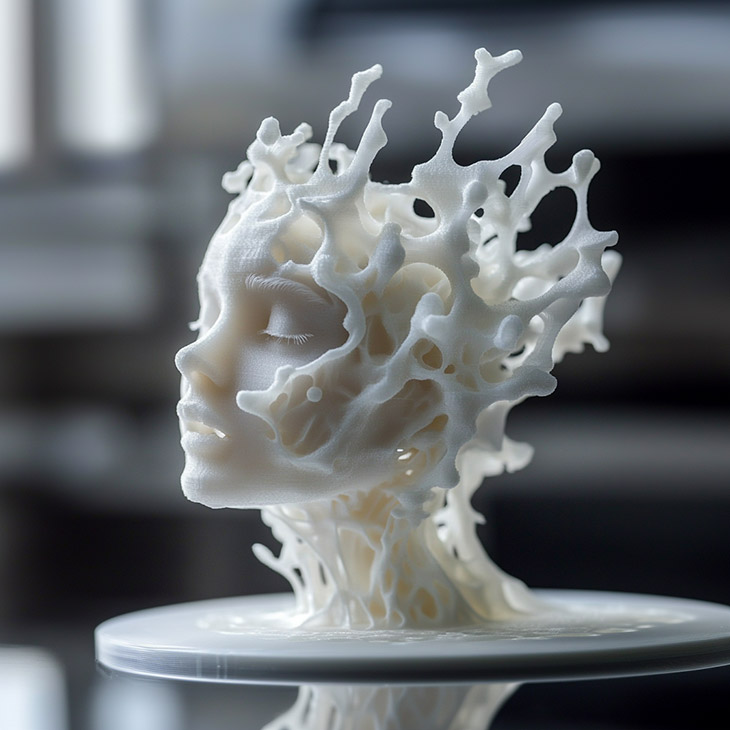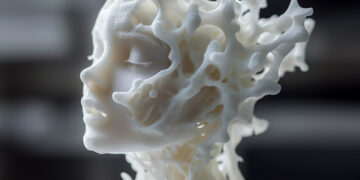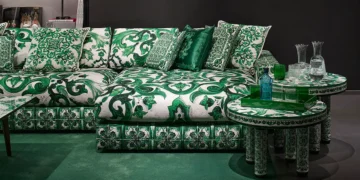
Finding the right filament can significantly impact the quality and success of high-performance 3D printing. Among various options, PETG filament stands out for its exceptional qualities. This article explains why PETG is a top choice for achieving superior results in 3D printing projects.
PETG combines the best properties of PLA and ABS, providing strength, flexibility, and ease of use. Let’s explore why this filament is a game-changer for high-performance 3D printing.
What is PETG Filament?
PETG filament, short for Polyethylene Terephthalate Glycol, combines the best of two popular 3D printing materials: PLA and ABS. Its balanced properties make it ideal for high-performance demands.
Material Composition
PETG filament consists of Polyethylene Terephthalate (PET) modified with Glycol (G). Glycol makes the polymer clearer, less brittle, and more durable. This composition allows PETG to exhibit strength and flexibility without compromising print quality. This unique blend results in cleaner prints and fewer issues such as warping.
Key Characteristics
PETG filament offers several standout characteristics. It’s strong, flexible, and resistant to high temperatures and moisture. Prints made from PETG show excellent layer adhesion and minimal shrinkage. PETG is also food-safe and recyclable, making it a practical choice for various applications.
By understanding these aspects of PETG filament, users can make informed decisions to enhance their 3D printing projects.
Advantages of Using PETG Filament
High Strength and Durability
PETG filament is excellent for printing functional parts due to its strength and durability. For instance, it can be used to print replacement gears for kitchen appliances that require resilience and can handle heavy use without wear. Unlike PLA, PETG pieces can endure more mechanical stress, making it a reliable choice when flexibility and toughness are needed.
Excellent Chemical Resistance
PETG filament shines with its chemical resistance. It’s compatible with various solvents, acids, and bases that would degrade PLA or ABS. For instance, if printing chemical storage containers or parts are exposed to cleaning agents, PETG retains its properties well. This characteristic expands its application range across industrial settings where exposure to chemicals is common.
Moisture and UV Resistance
This filament resists moisture and UV light, preserving the integrity of prints in diverse conditions. Due to its UV stability, PETG is optimal for outdoor applications. Garden tools printed with PETG, for example, can endure prolonged exposure to sunlight and rain without deteriorating. This resilience helps prevent warping and material degradation over time.
Easy to Print
PETG filament is relatively easy to print compared to other high-performance filaments. Beginners and experienced users alike benefit from its forgiving nature. It adheres well to print beds and maintains consistent layer adhesion. For those new to 3D printing, using PETG can significantly simplify the process of achieving smooth prints. The settings for PETG are easier to fine-tune, reducing frustration during the learning curve.

Explore the Versatility and Durability of Bambu Lab’s PETG Filament
Bambu Lab PETG filament is a favorite among 3D printing enthusiasts due to its exceptional properties.
Why Choose PETG for 3D Printing?
Choosing PETG filament for 3D printing offers numerous advantages. First, PETG provides the high strength and durability required for functional prototypes. Second, its chemical resistance ensures longevity in harsh environments. Third, PETG’s low moisture absorption helps maintain print quality over time. Unlike ABS, PETG doesn’t emit strong odors, making it a more pleasant choice for home printing.
Key Features of Bambu Lab PETG Filament
Bambu Lab PETG filament combines strength with flexibility. It maintains high clarity, producing visually appealing prints. The filament’s low shrinkage helps achieve precise dimensional accuracy. With its consistent 1.75mm diameter, Bambu Lab PETG reduces nozzle clogging. It is suitable for complex projects and prints smoothly. Its moderate printing temperature range makes it compatible with most personal and professional 3D printers.
Applications and Benefits of Using Bambu Lab PETG in Your Designs
Bambu Lab PETG filament excels in versatility. It’s perfect for producing functional parts like gears and brackets, and its UV resistance makes it suitable for outdoor applications. It can be used to create durable phone cases and automotive components. PETG’s transparency is also advantageous for creating light-diffusing elements. Bambu Lab PETG enhances the reliability and aesthetic appeal of designs, making it a popular choice among both beginners and seasoned professionals.
Best Practices for Printing with PETG
High-performance 3D printing with PETG filament offers fantastic results, but following certain practices maximizes the output quality and reliability.
Optimal Printing Settings
Choosing the right settings for PETG filament is crucial. The following settings typically work well:
- Nozzle temperature: 230-250°C
- Bed temperature: 70-90°C
- Print speed: 30-60 mm/s
These parameters help balance print quality and speed. Start with these values and adjust based on your printer’s behavior.
Bed Adhesion and Surface Preparation
Good bed adhesion improves the success rate of prints. Cleaning the print bed before starting is recommended, using isopropyl alcohol to ensure a clean, oil-free surface. PETG adheres well to:
- Glass beds with a glue stick
- PEI sheets
- BuildTak surfaces
A clean, prepared surface prevents warping and shifting during printing, ensuring a smooth finish.
Avoiding Common Issues
PETG filament prints can experience stringing and oozing. Lowering the print temperature or tweaking retraction settings reduces these problems. Stringing issues can be managed by:
- Increasing retraction distance by 1-2 mm
- Lowering bed temperature if excessive
Sealing opened filament spools limits moisture absorption, maintaining material quality for future prints.
Finally, Bambu Lab PETG filament is an excellent choice for high-performance 3D printing. Its strength and durability make it ideal for functional prototypes, capable of withstanding various weather conditions and demanding environments. This filament’s low moisture absorption and excellent chemical resistance are game-changers for outdoor and industrial use. Secure your prints with proper bed adhesion and avoid issues like stringing with the right settings. PETG filament offers a reliable, high-quality option for demanding 3D printing projects.



















